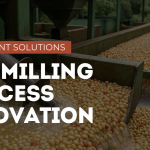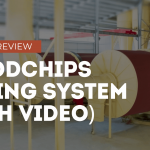The Rising Trend of Small-Scale Coffee Processing
The coffee industry is witnessing a significant shift as small-scale coffee processing gains momentum among independent producers worldwide. This trend is revolutionizing how coffee moves from farm to cup, empowering small farmers and specialty coffee entrepreneurs to take control of their product’s quality and value. By investing in small-scale coffee processing machines, producers are no longer limited to selling raw coffee cherries at market prices dictated by larger processors.
Small-scale processing offers numerous advantages: higher profit margins by selling processed rather than raw coffee, greater quality control throughout the production chain, and the ability to develop unique flavor profiles that command premium prices in specialty markets. The evolution of compact, affordable equipment has democratized coffee processing, making it accessible to operations of all sizes—from family farms of a few hectares to growing cooperatives and passionate hobbyists.
According to recent industry data, farms utilizing their own processing equipment report up to 30-40% higher returns compared to those selling only unprocessed cherry. This economic incentive, coupled with rising consumer demand for traceable, unique coffees, has catalyzed the adoption of small-scale processing technology across coffee-growing regions from Colombia to Kenya to Vietnam.
Understanding the Coffee Processing Journey
Before diving into specific equipment, it’s essential to understand the complete coffee processing journey and where different machines fit into the workflow.
The path from cherry to packaged bean involves several distinct stages:
- Harvesting – Selective picking of ripe coffee cherries
- Pulping – Removing the outer skin and some of the mucilage
- Fermentation – Breaking down remaining mucilage (in washed processing)
- Washing – Cleaning fermented beans
- Drying – Reducing moisture content to 10-12%
- Hulling/Dehulling – Removing the parchment layer
- Sorting – Separating beans by size, density, and quality
- Roasting – Developing flavor through heat application
- Packaging – Preserving quality for distribution
Each stage requires specific equipment, and the choice of processing method (washed, honey, natural, or other variations) determines which machines are necessary for your operation.
Essential Small-Scale Coffee Processing Machines
Pulpers and Depulpers
Pulping machines remove the outer skin and pulp of coffee cherries, representing the first mechanical step in processing.
Manual Pulpers
- Capacity Range: 50-200 kg of cherry per hour
- Operation: Hand-cranked or pedal-powered
- Best For: Micro-lots, farms processing under 1,000 kg of cherry daily
- Price Range: $300-800
- Advantages: Low initial investment, no energy requirements, highly portable
Motorized Pulpers
- Capacity Range: 200-1,000 kg of cherry per hour
- Power Options: Electric (0.5-2 HP motors) or diesel
- Best For: Small farms processing 1,000-5,000 kg of cherry daily
- Price Range: $1,000-3,500
- Advantages: Higher throughput, less labor-intensive, more consistent results
Quality considerations include the adjustability of the pulping disc or drum to accommodate different cherry sizes and the cleanliness of separation between bean and pulp. Look for models with minimal bean damage rates (under 5%) and effective initial sorting capabilities.
Fermentation Equipment
While fermentation often occurs in simple tanks, specialized equipment can improve consistency and quality:
- Controlled Fermentation Tanks: Insulated, temperature-monitored tanks ($500-2,000)
- Accelerated Fermentation Systems: Enhanced microbial activity systems ($1,500-4,000)
- Mechanical Mucilage Removers: Alternative to traditional fermentation ($2,000-5,000)
These systems help standardize fermentation times and conditions, particularly valuable in regions with variable climates where traditional open-air fermentation produces inconsistent results.
Washing Stations and Water Management
Proper washing removes fermentation residue and improves final cup quality. Small-scale options include:
- Manual Washing Channels: Concrete or wooden channels with manual agitation ($200-800 to construct)
- Mechanical Washers: Agitation systems for more consistent cleaning ($1,000-3,000)
- Water Recycling Systems: Reducing environmental impact by filtering and reusing water ($800-2,500)
Water management is increasingly important as coffee-growing regions face resource constraints. Modern compact systems can reduce water usage by up to 80% compared to traditional washing methods.
Drying Equipment
Controlled drying prevents mold growth and preserves coffee quality by evenly reducing moisture content.
Solar Dryers
- African Raised Beds: Simple mesh or wire tables ($100-300 per bed)
- Solar Tunnels/Greenhouses: Plastic-covered structures with improved temperature control ($500-2,000)
- Capacity: 50-500 kg of wet parchment per structure
- Advantages: Zero energy costs, minimal environmental impact
Mechanical Dryers
- Vertical Dryers: Space-efficient option for small operations ($2,000-6,000)
- Rotary Drum Dryers: More even drying for premium quality ($3,000-10,000)
- Capacity: 200-1,000 kg per batch
- Energy Sources: Electric, propane, biomass (coffee husks)
- Advantages: Weather independence, precise moisture control, faster processing times
The choice between solar and mechanical depends on climate reliability, available space, and desired throughput. Many operations use a hybrid approach, starting with solar and finishing with mechanical for greater precision.
Hullers and Dehullers
Hulling removes the parchment layer surrounding the coffee bean after drying.
- Manual Hullers: Hand-cranked models for micro-batches ($300-700)
- Small Motorized Hullers: Electric or diesel-powered options (0.5-3 HP motors)
- Capacity Range: 50-500 kg of parchment coffee per hour
- Price Range: $800-3,000
- Quality Considerations: Adjustable clearance for different bean sizes, minimal bean breakage
Look for models with integrated winnowing systems that separate the parchment chaff from the green beans in one process.
Graders and Sorters
Sorting improves consistency and allows for separation of premium beans that command higher prices.
- Size Graders: Screen systems with different perforation sizes ($500-2,000)
- Density Tables: Separate beans by weight using vibration and air ($1,500-5,000)
- Color Sorters: Entry-level optical sorters for detecting defects ($5,000-15,000)
- Capacity Range: 50-300 kg per hour for small-scale equipment
While full electronic color sorting remains expensive, smaller manual and semi-automated options have become more affordable, allowing quality-focused producers to achieve export-grade sorting at reasonable investment levels.
Small-Scale Roasters
Roasting at origin adds substantial value and opens direct-to-consumer market opportunities.
- Sample Roasters: 100-500g capacity for test batches ($1,500-3,000)
- Batch Roasters: 1-5 kg capacity per roast ($3,000-12,000)
- Continuous Small-Scale Roasters: Up to 20 kg per hour ($8,000-25,000)
- Energy Options: Electric, gas, or biofuel
Modern small roasters often include digital temperature control and logging capabilities to ensure consistency across batches. Entry-level roasters have made significant quality improvements in recent years, narrowing the gap with professional equipment.
Key Considerations When Selecting Processing Equipment
Production Capacity Requirements
Matching equipment capacity to your production volume is crucial for operational efficiency:
- Micro-scale: Processing under 500 kg cherry daily
- Small-scale: Processing 500-2,000 kg cherry daily
- Medium-scale: Processing 2,000-5,000 kg cherry daily
Calculate peak daily harvest volumes during the busiest part of your season, then select equipment with 20-30% additional capacity to accommodate growth and avoid bottlenecks.
Energy Requirements and Options
Energy availability significantly impacts equipment selection:
- Manual Options: Ideal for remote locations without reliable power
- Electric Equipment: Most efficient when grid power is available
- Diesel/Gasoline: Independent operation but higher operating costs
- Solar Systems: Increasingly viable for powering smaller equipment
Consider hybrid systems that can operate manually during power outages. Solar-powered options continue to improve in affordability and performance for applications like drying and basic pulping operations.
Space Constraints and Mobility
Equipment footprint matters, especially in mountainous growing regions with limited flat space:
- Vertical Integration: Stacked processing systems for small footprints
- Mobile Units: Trailer-mounted systems that serve multiple small farms
- Modular Design: Equipment that can be disassembled and moved seasonally
For cooperatives, mobile processing units can be an excellent solution, bringing quality processing to member farms without requiring each to invest in complete systems.
Budget Considerations
Investment levels should align with production volume and target market:
- Entry-Level Setup (Manual pulper, fermentation tanks, raised beds, manual huller): $1,500-3,000
- Small Farm System (Motorized pulper, basic washer, improved drying, small huller): $5,000-10,000
- Complete Small-Scale Line (All motorized equipment with sorting and sample roaster): $15,000-30,000
Many equipment manufacturers now offer financing options specifically designed for small producers, with payments structured around harvest seasons.
Quality Impact
Different equipment choices directly affect cup quality:
- Pulpers: Minimizing bean damage improves cup clarity
- Fermentation Control: Consistency in fermentation prevents off-flavors
- Drying Equipment: Even, controlled drying preserves aromatic compounds
- Hullers: Gentle handling maintains bean integrity
Premium markets increasingly reward quality differentiation, making investment in better equipment financially justifiable through higher green bean prices.
Building an Integrated Processing Line
Creating an efficient processing line requires careful planning to ensure compatible capacities at each stage:
- Identify Your Bottleneck: Processing speed is limited by your slowest piece of equipment
- Match Capacities: Align throughput at each stage (especially critical between pulping and drying)
- Consider Labor Requirements: Balance mechanization with available workforce
- Plan for Expansion: Purchase equipment that can scale with additional modules
For most small operations, the drying stage represents the most significant bottleneck. Having sufficient drying capacity is essential, whether through multiple raised beds or mechanical dryers.
Sample Integrated System for a 2-Hectare Farm
- Daily Peak Volume: ~600 kg cherry
- Recommended Equipment:
- Small motorized pulper (800 kg/hour)
- Two fermentation tanks (alternating use)
- Manual washing channel
- Six raised beds plus small mechanical dryer for backup
- Manual or small motorized huller (100 kg/hour)
- Basic screen grader set
Cost-Benefit Analysis: Processing vs. Selling Cherry
The financial case for on-farm processing is compelling but requires careful analysis:
Investment Costs
- Initial Equipment: $5,000-15,000 for basic small-scale processing
- Annual Operating Costs: Labor, energy, maintenance, water ($1,000-3,000)
Revenue Potential
- Cherry Sale Value: $0.30-0.80/kg (regional market dependent)
- Parchment Value: $1.50-3.00/kg (2.5-3x cherry value)
- Green Bean Value: $3.00-6.00/kg (4-6x cherry value)
- Roasted Bean Value: $8.00-20.00/kg (10-20x cherry value)
For a farm producing 5,000 kg of cherry annually, processing to parchment alone can increase revenue by $4,000-8,000 per year, potentially recovering equipment costs within 2-3 harvest seasons.
Maintenance and Longevity Considerations
Proper maintenance extends equipment life and preserves processing quality:
- Daily Cleaning Protocols: Prevents fermentation contamination and bean defects
- Seasonal Maintenance: Bearing replacement, belt inspections, motor servicing
- Spare Parts Inventory: Critical components to prevent harvest-time breakdowns
- Training Requirements: Staff skills needed for basic repairs and adjustments
Quality equipment properly maintained can last 10-15 years or more, making the investment more economical when calculated over the equipment lifespan.
Success Stories: Transforming Through Small-Scale Processing
Case Study 1: La Familia Argote, Colombia
This five-hectare family farm invested $7,000 in small-scale processing equipment, including a motorized pulper, controlled fermentation tanks, and improved drying beds. Within two years, their improved processing allowed them to access specialty markets, increasing average green coffee prices from $2.20/kg to $5.80/kg. Their investment was recovered in 18 months, and they now operate a successful farm-to-roaster direct trade business.
Case Study 2: Kigoma Cooperative, Tanzania
This 75-member cooperative pooled resources to purchase community processing equipment that rotates between member farms. Their $12,000 investment in mobile processing units increased average quality scores from 82 to 86 points, allowing access to premium markets. Member incomes increased by an average of 45% within the first season of implementation.
Making the Right Equipment Decisions
Selecting appropriate small-scale coffee processing machines requires balancing immediate budget constraints with long-term quality and efficiency goals. For new entrants, a phased approach often works best:
- Start with critical quality-impacting equipment (pulper and drying systems)
- Reinvest improved revenue into additional equipment
- Focus on stages that most impact your specific quality challenges
- Consider cooperative ownership for more expensive equipment
The democratization of coffee processing technology continues to accelerate, with new innovations making quality processing more accessible each year. For today’s small producers, the question is no longer whether processing is accessible, but rather which processing approach best suits their specific circumstances and market goals.
By carefully selecting appropriate small-scale coffee processing machines, independent producers can transform their operations from commodity cherry suppliers to distinguished specialty coffee producers, capturing more value and building direct relationships with roasters and consumers worldwide.
Comparison Table: Small-Scale Coffee Processing Equipment
| Equipment Type | Capacity Range | Power Options | Price Range (USD) | Quality Impact |
|---|---|---|---|---|
| Manual Pulpers | 50-200 kg/hr | Manual | $300-800 | Medium |
| Motorized Pulpers | 200-1,000 kg/hr | Electric/Diesel | $1,000-3,500 | Medium-High |
| Fermentation Tanks | 100-500 kg/batch | None | $200-2,000 | High |
| Manual Washing Stations | 100-300 kg/hr | Manual | $200-800 | Medium |
| Mechanical Washers | 300-800 kg/hr | Electric | $1,000-3,000 | High |
| Solar Dryers | 50-500 kg/batch | Solar | $100-2,000 | Medium-High |
| Mechanical Dryers | 200-1,000 kg/batch | Electric/Gas/Biomass | $2,000-10,000 | High |
| Manual Hullers | 50-100 kg/hr | Manual | $300-700 | Medium |
| Motorized Hullers | 100-500 kg/hr | Electric/Diesel | $800-3,000 | Medium-High |
| Screen Graders | 50-200 kg/hr | Manual/Electric | $500-2,000 | High |
| Density Tables | 100-300 kg/hr | Electric | $1,500-5,000 | High |
| Sample Roasters | 0.1-0.5 kg/batch | Electric/Gas | $1,500-3,000 | Very High |
| Small Batch Roasters | 1-5 kg/batch | Electric/Gas | $3,000-12,000 | Very High |
Recommended Equipment Checklist by Farm Size
Micro Farm (under 1 hectare):
- [ ] Manual or small motorized pulper
- [ ] Basic fermentation tanks
- [ ] Raised drying beds
- [ ] Manual huller
- [ ] Simple screen grading set
Small Farm (1-5 hectares):
- [ ] Motorized pulper with sorter
- [ ] Multiple fermentation tanks
- [ ] Enhanced washing station
- [ ] Combined solar and mechanical drying
- [ ] Motorized huller
- [ ] Basic grading equipment
- [ ] Sample roaster (optional)
Medium Farm/Cooperative (5-20 hectares):
- [ ] High-capacity motorized pulper
- [ ] Controlled fermentation system
- [ ] Mechanical washing system
- [ ] Mechanical dryer with backup solar capacity
- [ ] High-capacity huller with grader
- [ ] Density table
- [ ] Small batch roaster




